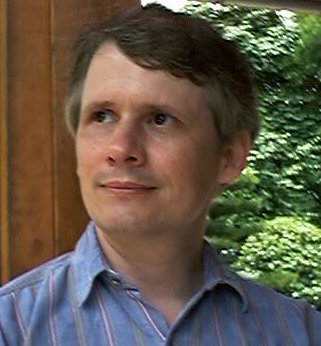
Curriculum Vitae,
Ray 2021 CV .pdf.
Brief biography.
Some photos of Tom Ray.
Research
Have a look at some of my Publications.
My current research: The diverse set of psychoactive drugs collectively represents a rich set of tools for probing the chemical architecture of the human mind. These tools can be used to explore components of the psyche whose discreteness is normally obscured by their being embedded in the complete tapestry of the mind. By activating specific components of the mind, they are made to stand out against the background of the remainder of the psyche. Thus both their discreteness and their specific contribution to the psychic whole can be better appreciated. This work suggests that the human mind is populated by mental organs, which are defined as populations of neurons which bear specific neurotransmitter receptors on their surface (e.g.: serotonin-7, histamine-1). Some mental organs provide consciousness (in separate adult and childhood forms); others function to shape consciousness (in long and short time scales); others give salience, meaning or significance to the contents of consciousness, while others provide content to consciousness. Some mental organs support the facilities of language, logic and reason, which appear to be fully developed only in adult humans. Other mental organs provide affective ways of knowing the world, through feeling alone, which provide the complete archaic mind in our developmental and evolutionary antecedents. Mental organs evolve by duplication and divergence, and are the mechanism by which evolution sculpts the mind. Mental organs provide a direct linkage from genes, to proteins, to neural structures, to psychology, providing the missing link between biology and psychology. When seen from this perspective, the mind comes into focus. It has tremendous explanatory and predictive power. The mind has structure, function, process, genetics, development, and evolution. It provides understanding of psychoactive drugs, both psychiatric and recreational. It helps us to understand ourselves and others. It provides new approaches to understanding the etiology and treatment of mental disorders. I am in the process of understanding how variation in the proportioning of these various elements in individual minds, contributes to the peculiarities of the personality, and in extreme variations or interactions, to a variety of mental disorders: schizophrenia, autism, depression, anxiety, obsessive compulsive disorder, mental retardation, learning disorders, bipolar disorder, addiction, disorders of rage, and post-traumatic stress disorder. Have a look at some of my publications on the human mind.
In the summer of 2001, I began an exploration of the newly created
genome databases, with a broad interest in whatever interesting
discoveries might be made there. I am using the genome databases
to study the origin and evolution of gene families. I am also
exploring the possiblity that the genomic data may provide new
approaches for understanding the human mind. The new genome
databases can provide a complete catalog of chemical communication
systems in the brain. They have the potential of providing a
comprehensive understanding of the processes of development and
differentiation that generate the architecture of the
brain. And by comparing human and ape genomes, they can point
to the genetic and neural structures that make us uniquely human.
From 1990 to 2001, I conducted research on
digital evolution, which means exploring what happens when evolution by
natural selection is embedded in the medium of digital computation.
This work began with the creation of
Tierra,
a system in which self-replicating machine code programs
evolved by natural selection.
This work received considerable
media attention.
In 2000, I implemented a new system called
Virtual Life, which is a derivative of
Evolved Virtual Creatures originally created by
Karl Sims.
In June of 2003 I began a collaboration with Ivan Tanev to develop
the VirtualLife project in
new directions.
This kind of work is known to many people as
Artificial Life.
I have some thoughts on
evolvability.
Have a look at some of my publications on artificial life.
From 1974 to 1989, I was a tropical biologist who studied the
evolution and ecology of a variety of organisms inhabiting rain forests.
My work focused primarily on the foraging behavior of vines in the
family Araceae, however, I also studied ants, butterflies, and beetles.
Most of my field work was conducted in
Costa Rica. After 1982, I worked principally at
Finca El Bejuco
biological station located in the lowland rain forests of northern
Costa Rica, which I built, and own and operate. I was deeply
involved in
rain forest conservation in Costa Rica.
Have a look at some of my publications on tropical biology.
Various
Want to travel to
Costa Rica (photos and links)? My daughter is Costa Rican,
and this is where I do my
Rain Forest Conservation work, research in Tropical Biology,
and hang out at
Finca El Bejuco,
my home, ecolodge, and laboratory in the rain forest.
In August 1998, I
joined the faculty
of the
University of Oklahoma,
as a Professor of
Biology and
Computer Science.
I retired from OU in May 2021. I am originally from
Norman
Oklahoma,
a wonderful place to live.
I taught Evolution
I have a daughter,
Ariel Ivy Ray,
born in 1993.
I studied Japanese by translating
Traditional Japanese Children's Stories
into English. Here are some
Japanese Smiley Faces.

